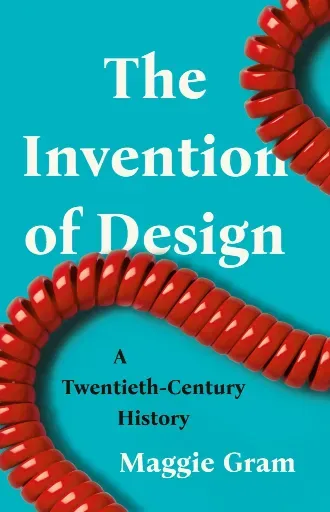I'm sending this over the long holiday weekend (at least here in the US), as I think subscribers may find that the recommended book makes for good 'summer reading.' Also, it includes an interactive cube that I spent way too much time getting Claude to create. Enjoy!

Something I lament is a lack of historical awareness in the field of UX/Design, and so I enthusiastically picked up Maggie Gram’s The Invention of Design: A Twentieth Century History. Let me say, straightaway, that if you’re interested in ‘how we got here’ when it comes to the current state of Design, this book is worth your time. It’s a quick read, deeply thoughtful, and Gram’s writing style is lucid and direct.
Anyone who knows me knows I’m a framework guy, and the book’s organization is worth the price of admission. Gram makes clear that she’s not trying to provide some exhaustive treatise on the subject of Design, and recognizes that a clear definition of design is nearly impossible. Her key insight is that there have been 6 historical waves, movements, or, as I like to think of them, vectors, that have led us to our current conception of Design. No vector negates the prior ones; it’s more that they continue to flesh out just what we mean when we talk about design:
- Beauty
- Function
- Problem solving
- Human-centeredness
- Experience
- Thinking
As someone who has been grappling with definitions and articulations of Design for the last 25 years, this approach is better than most that I have read (or came up with myself). It’s appropriately complex without being overwhelming. It expertly reflects the evolution of the term, and helps us understand why, in 2025, we have such trouble talking about Design. Any two people talking about design may each be thinking of any combination of these items, and if their combinations don’t align, they’ll just talk past each other.
So, as an exploration of the concepts undergirding design, this book is quite insightful. As a history of design, I found it uneven. The first two chapters (Beauty and Function) suffer from being mini-biographies of people related to the concept, rather than vigorous explorations of the concepts themselves. It’s unsatisfying to have a ‘history’ be so defined by a couple individuals.
As a history, it picks up steam with Problem Solving, which, while deservedly anchored in Herbert Simon’s work, situates the idea within a broader post-war utilitarian mindset, and subsequent chapters share this more robust approach to the history.
Of likely particular interest to readers of this newsletter will be the last three chapters, addressing the founding of user-experience-specific practices. And while Ms Gram approaches these subjects critically (recognizing the questions of ‘whose experience’ when it comes to ‘experience,’ the misapplication of ‘design thinking’ to all realms), I was heartened to see that, on the whole, she comes away with a generally positive sentiment about design’s contributions.
The moment I saw the 6 'vectors', I knew I wanted to visualize it. The problem was, I couldn't quite figure out how. After various experiments, including some that looked like Jesse's Elements of User Experience, the best I have is this cube (with six sides) that unfolds to reveal the next element of Design. This was made by Claude, after (I kid you not) 150 iterations.
